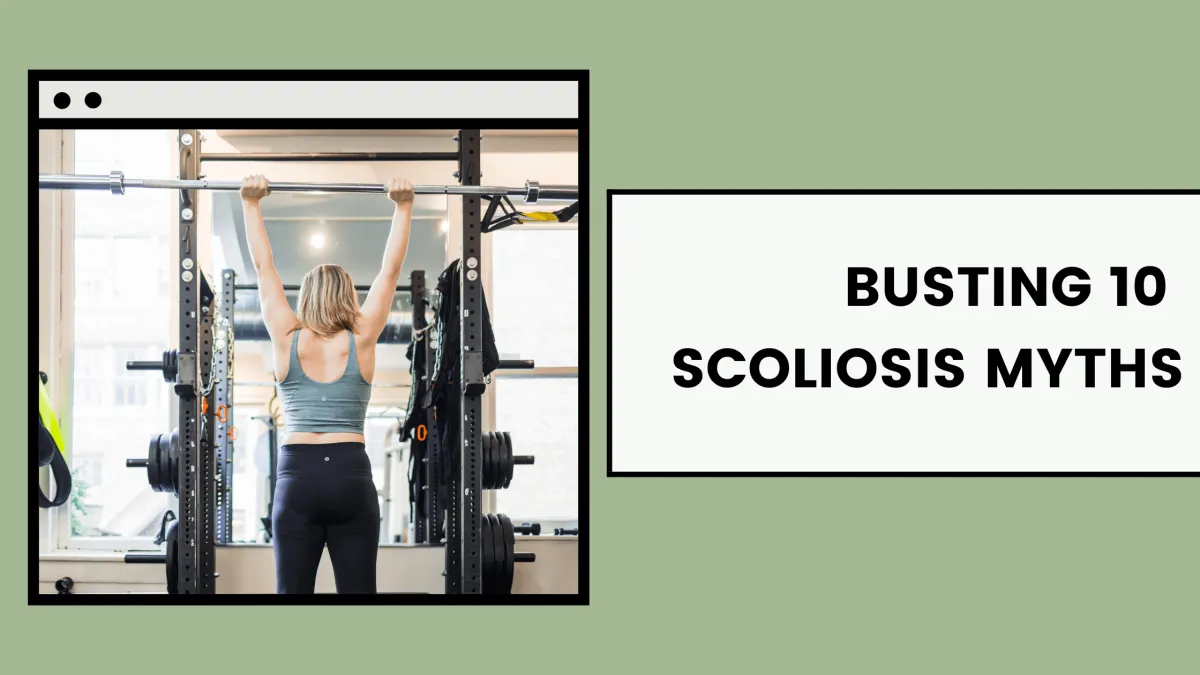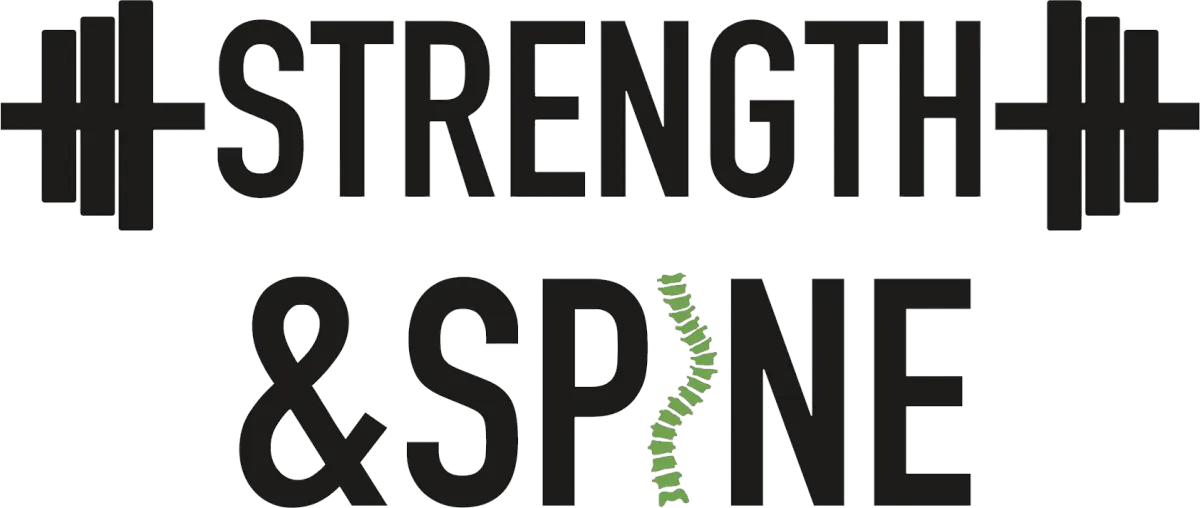Check Out The Latest Blog Posts To Learn More

Busting 10 Scoliosis Myths
10 Scoliosis Myths — Busted
There’s a lot of talk about what scoliosis is — and what it isn’t. We’ve learned a lot about scoliosis in recent years and have made several advancements in treating it. But the reality is, this information is all fairly recent, and because of that, there are still plenty of myths that persist.
But we’re here to debunk those scolio-myths and to tell you the truth! We want you to feel empowered and confident with scoliosis because it doesn't define you. And the first step to do that? Knowing the truth about your spine.
Myth #1: Scoliosis isn’t painful
Scoliosis is not just a curve that affects the spine — it’s a curve in the spine that impacts so many other parts of your body. Sometimes those impacts can be incredibly painful. Scoliosis doesn't just affect your back area, it can also affect nervous system signals, muscle balance, your digestive and reproductive system, your heart, lungs, and even your sleeping patterns.
When people with scoliosis say they hurt, they mean it.
Myth #2: Just watch and wait
Many doctors and even physical therapists tend to tell patients to wait and see how their scoliosis shakes out into adulthood. The reason this isn’t a good idea? Things can progress so much that it requires surgery, or really affects your daily life.
People with scoliosis often don’t understand their curve, so they aren’t sure what to look for or what constitutes a red flag signaling the progression of their condition.
Educating patients/clients and giving them the right resources to understand their scoliosis and how it affects their unique bodies will always be a better approach.
Myth #3: Adults don’t get scoliosis
Because scoliosis is strongly associated with growing bones, it’s often assumed that only children or teenagers can develop it. However, that’s not true.
Scoliosis involves more than the bones — it also is a culmination of genetics, muscle and ligament condition, and lifestyle. In the U.S., around 17,500 children with scoliosis go to the ER, while 74,000 adults go. That’s about 250 per day. In the UK, weaker ligaments cause 30% of adults over age 60 to have scoliosis, compared to just 3% of adolescents.
Which brings us to our next point…
Myth #4: Children can grow out of their scoliosis
For the same reasons above, many people think that once a child/teen stops growing, their scoliosis would stop progressing. But the truth is, it often progresses as we age, and the bigger the curve, the more likely it is to progress.
That’s because as we age, our bone density decreases and our muscles and ligaments become weaker, causing the spine to lose some of its stability.
And there’s no cure for scoliosis — so we can’t just “grow out of it” with time.
Myth #5: You can get scoliosis from poor posture
You’ve probably been told to “just sit up straight'' several times in your life if you have scoliosis. But poor posture isn’t a direct cause of scoliosis. While it can help a little bit, scoliosis is caused by multiple factors that are as unique as the individuals who have it.
However, prolonged periods of poor posture (specifically looking down) can cause several neck problems, like muscle inflammation, strain, or disc degeneration, later in life, which might play a part in worsening scoliosis (or even developing kyphosis) as an adult.
Myth #6: It makes your body fragile
While scoliosis does impact various parts of the body, people with scoliosis can still lead very active lifestyles. There are several professional athletes with it, such as Usain Bolt, Natalie Coughlin, Maritza Correia, and James Blake.
You don’t need to stop being active if you have scoliosis or have had spinal surgery. You just need to change the way you do it to accommodate YOUR body.
Myth #7: You can’t travel
This myth circulates because many people who have spinal surgery can’t travel for a period of time following their operation. Sitting for hours at a time in the upright position required in planes, cars, or trains may cause some strain early on, but once they are healed, there’s virtually no reason not to travel (unless told otherwise).
Even if you haven’t had spinal surgery, a great way to combat aches and pains associated with long travel is to stretch and keep them strong before you’re on the go.
Myth #8: It’s only physical
Scoliosis doesn't just impact our bodies — it can also impact us emotionally and socially. 90% of scoliosis patients said they’d like to have more chances to talk about their feelings with healthcare professionals, but only 5% said they actually got the chance to do so.
Many people don’t feel seen or heard, continuing to have their pain and struggle disregarded because it's not “that bad.” Hearing that your entire life takes a toll.
And when you feel embarrassed about the way your curve makes you look or feel, it’s not at all uncommon to start missing out on things you used to love or social events with people you love. And that can have a negative impact on you emotionally.
Myth #9: Surgery can cure scoliosis
While surgery can help relieve pain, stabilize the spine, and help restore some function and mobility in areas of your spine, it’s not a cure. And many people will still need to keep up with and manage their pain afterward through physical therapy.
Myth #10: Exercise doesn’t help scoliosis
Again, many people assume that having scoliosis means that you can’t be active. The problem is that we actually need strong muscles to keep the spine stable. And we can use strength training to build that muscle.
Strength training can be a crucial part of preventing scoliosis progression, minimizing pain, and reducing the appearance of your curve. Several people find the relief they need through it, like our client Wendy, who worked with us in the Scoliosis Strength Program.
"Hands down working with Beth has been the best thing I have done for myself to get a handle on my pain. I came to Beth after two (one failed and one very successful) extensive spine surgeries with all sorts of muscle weaknesses and various and assorted areas of extreme tightness. I was at a point where I didn't think I would ever be freed of pain again. Through her program and feedback, I have made astonishing progress. I have never been someone who truly enjoys working out, and maybe I never will be, but after seeing the results I've achieved in the past three months there is no possible way I could stop doing the exercises and stretches. I am finally feeling less and less pain. I am gaining strength. Not only that, but she's given me my life back. I was starting to feel so hopeless and now I feel like at 43 my life is finally beginning. I have severe scoliosis and am fused T2-pelvis and cannot believe what my body is able to do! Absolutely recommend!
If you’re curious to see how strength training can work for you — and start a custom program that builds strength from any fitness level — schedule a call with us here!
WE ARE
Strong with Scoliosis
Start today on an exercise program that helps you become empowered, strong, and confident in your scoliosis curve.
FIND US
Strength and Spine
129 W 29th Street, 2nd Floor
Arrive Wellness
New York, NY 10001
(By Appointment Only)

